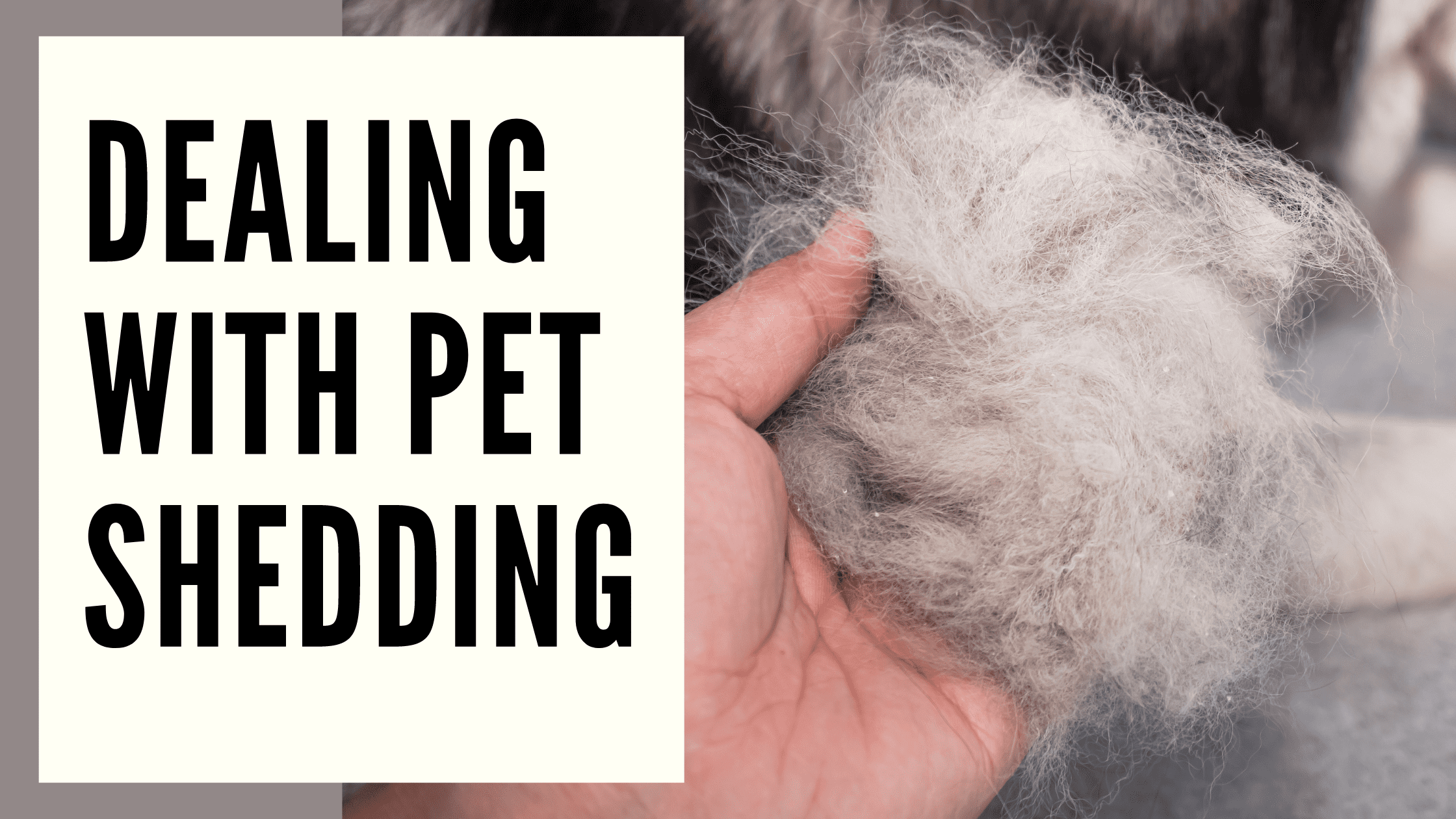Dealing with Pet Shedding: An In-Depth Guide
Shedding is a natural and essential process for most pets. It’s important for pet owners to understand the basics of shedding, including the reasons behind it, and how it varies among different breeds and seasons. This comprehensive guide aims to provide in-depth insights into managing shedding effectively.
Understanding the Types of Shedding
Seasonal Shedding: Many pets shed seasonally, usually in the spring and fall, in response to temperature changes.
Breed-Specific Shedding Patterns: Different breeds have unique shedding patterns. For instance, double-coated breeds tend to shed more heavily.
Factors Affecting Pet Shedding
Diet and Nutrition: Proper nutrition is key to maintaining a healthy coat and minimizing excessive shedding.
Health Conditions: Various health issues, including allergies and skin conditions, can cause abnormal shedding.
Environmental Factors: Changes in environment, like humidity and temperature, can affect a pet’s shedding pattern.
Practical Strategies for Managing Shedding
Regular Grooming: Routine brushing and bathing can significantly reduce shedding.
Appropriate Grooming Tools: Selecting the right brush or comb for your pet’s coat type is crucial.
Home Cleaning Tips: Regular cleaning, using vacuum cleaners and lint rollers, can help manage shed hair in your living space.
Nutritional Approaches to Control Shedding
Healthy Diet: Foods rich in proteins and omega-3 fatty acids can promote a healthier coat.
Supplements: Certain supplements, like fish oil, can be beneficial in reducing shedding.
Professional Grooming: When and Why
Choosing Professional Services: For some breeds, professional grooming is necessary to properly manage their coats.
Benefits of Professional Grooming: Professionals can handle complex grooming needs and provide tips for at-home care.
Dealing with Allergies Related to Shedding
Identifying Allergic Reactions: Some individuals may be allergic to pet dander, which is often found in shed hair.
Allergy Management Strategies: Regular cleaning and air purification can help reduce allergen levels in the home.
Innovative and DIY Solutions for Shedding
Latest Shedding Products: Exploring the market for advanced grooming tools and shedding control products.
DIY Home Remedies: Homemade solutions and tricks for managing shedding.
Recognizing Excessive Shedding and Its Implications
Normal vs. Excessive Shedding: Understanding the difference is crucial in identifying potential health issues.
Warning Signs: Unusual shedding patterns or hair loss can indicate health problems requiring veterinary attention.
Consulting a Veterinarian: Medical Perspectives on Shedding
When to Seek Veterinary Advice: Persistent excessive shedding might require a professional evaluation.
Medical Interventions: In some cases, medications or treatments may be necessary to control shedding.
The Emotional and Psychological Aspects of Pet Shedding
Coping with Shedding-Related Stress: Strategies for managing the frustration associated with pet hair in the home.
Understanding the Human-Pet Bond: Acknowledging the emotional connection can make managing shedding a more positive experience.
Eco-Friendly Approaches to Shedding Management
Sustainable Grooming Products: Choosing environmentally friendly grooming tools and products.
Reducing the Environmental Impact: Adopting practices that minimize waste and ecological footprint.
Community Engagement and Shared Experiences
Leveraging Community Knowledge: Joining pet owner forums and groups for tips and support.
Sharing Experiences and Tips: Learning from the experiences of other pet owners can offer new insights into shedding management.
Looking Forward: The Future of Shed Management
Trends and Innovations: Staying updated on new products and grooming techniques.
Research and Developments: Following scientific studies and research for a deeper understanding of pet health and shedding.
Conclusion: Embracing the Challenge of Pet Shedding
Managing pet shedding is a multifaceted task that encompasses understanding, patience, and the right techniques. By embracing this challenge, pet owners can ensure their pets are healthy and happy, while maintaining a clean and comfortable home environment.
FAQs
1. What are the best dietary changes to reduce pet shedding?
Incorporating foods high in omega-3 fatty acids, like fish or flaxseed oil, and ensuring a balanced diet with high-quality proteins can help reduce shedding.
2. How often should I groom my pet to control shedding?
The grooming frequency depends on your pet’s breed and coat type. Generally, brushing a few times a week is beneficial for most pets.
3. Are there any specific breeds that shed less?
Yes, some breeds are known for minimal shedding, such as Poodles, Bichon Frises, and certain terrier breeds.
4. Can excessive shedding be a sign of illness in pets?
Yes, excessive or unusual shedding can indicate health issues such as allergies, skin infections, or hormonal imbalances.
5. What are some effective home remedies for managing pet shedding?
Regular brushing, bathing with a deshedding shampoo, and maintaining a clean living environment are effective home strategies.
